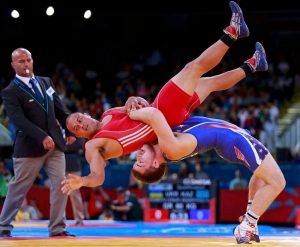Despite the principled staging of the show, wrestling is a dangerous activity for the participants: in an effort to make the fight more spectacular, many fighters use traumatic techniques, the safe execution of which requires the correct technique from both participants in the match. Accordingly, an error in the execution of the technique (in the slang of wrestling fans – “botch”) can lead to tragic consequences.

For example, Darren Drozdov’s career ended in 1999 when he suffered a severe neck injury during a match with D’Lo Brown. When Brown attempted to land his trademark “Powerbomb Run-Up”, he failed to grab Drozdov properly, and Drozdova failed to perform a proper jump to help him get into the correct position. Drozdov fell on his head and broke two vertebrae in his neck, as a result of which he was paralyzed. Also in 2001, the Japanese wrestler Hayabusa, while performing the “Moon Flip” (back flip with repulsion from the ropes), slipped with one foot from the rope, fell on his head (and not on his stomach, as the technique suggests) and, due to a fracture of the spine, was paralyzed. In 2009, Japanese wrestler Mitsuharu Misawa died after suffering a broken neck from a reverse suplex in the ring. In 2015, Mexican luchador Perro Aguayo Jr. (168 cm) suffered a fracture of the cervical spine and died after being hit during a match by Rey Mysterio (162 cm).
Another common health problem among wrestlers is traumatic brain injury. In addition to concussions, which can lead to hard wrestling techniques, damage to the nervous tissue that accumulates as a result of regular traumatization also poses a danger. One of the most infamous examples of this pathology is Canadian wrestler Chris Benoist; in 2007, Benoit killed his wife and son, after which he hanged himself. According to the doctor who performed the autopsy, Benoit’s brain was so badly damaged that it resembled the brain of an 85-year-old Alzheimer’s patient; one of Benoit’s signature moves was a headbutt after jumping off the top rope.
Currently, the leading wrestling promotions are taking measures aimed at reducing traumatic brain injuries. In March 2010, due to the high risk of concussions and long-term brain damage, chair hits to the head were banned in WWE. AEW also banned this technique shortly after its opening.

In addition to injuries to the brain and spine, like any sport with a wide use of amplitude throws, wrestling poses a risk of fractures and other injuries of the musculoskeletal system. Another component of wrestling’s health hazards is the widespread use of anabolic steroids, analgesics, and other medications.
According to a 2014 study conducted by Eastern Michigan University, which studied wrestlers who performed between 1985 and 2011, the death rate among wrestlers is 2.9 times higher than among men in the US as a whole [44]. John Moriarty of the University of Manchester and Benjamin Morris of FiveThirtyEight report that the death rate among wrestlers is higher than among athletes in other sports. Experts suggest that a combination of physical activity, lack of off-season, and the drug culture of the 1970s and 1980s contribute to the high death rate among wrestlers. In April 2014, less than 25 years after 1990’s WrestleMania VI, a third of the show’s 36 contestants had already died, with none of the deceased under the age of 64.
